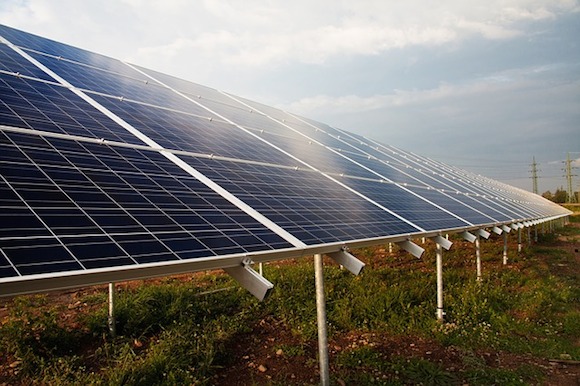Despite all the recent coverage of global and national activity on emissions reductions, the Renewable Energy Target and the future of coal, energy policy has created strikingly little debate in the current Victorian election campaign.
Aside from the odd media release talking about how good or bad a Labor Government would be for the renewables sector, it is hard to identify a coherent energy policy from either main political party. Yet both the Coalition and Labor have energy policies, albeit contrasting and incomplete ones. Where they differ most is on climate change. If one energy policy area wins or loses the parties votes, it will be this one.
In case you missed it, in October the Victorian Coalition Government released Victoria’s Energy Statement. Labor, while not producing such a comprehensive document (not having the weight of the Victorian bureaucracy behind it), made a range of energy-related commitments in its Platform 2014 document released earlier this year.
The Coalition’s focus appears to be on reforms to both the electricity and gas markets. It wants to review network tariffs with a view to introducing fairer prices for consumers. It will also undertake a review of the retail energy market and push for national reforms to make the gas market more efficient. While these policies are not sexy or potential vote winners (presumably the reason for the limited coverage), they are sensible, pragmatic and limited-but-necessary steps to ensure well-functioning energy markets.
Labor, by contrast, has said next to nothing about energy market reform. It has been relatively silent on the big issues facing the industry such as reforms to network tariffs and the gas market. This is not to say that they would not take part in, or even lead, the ongoing reforms of state and national energy markets. It was a Labor Government that introduced smart meters to Victoria and removed the last vestiges of regulation from electricity pricing.
This time the party has not indicated what it wants to do – apart from providing a strong and clear commitment to energy efficiency. Of 26 commitments relating to energy in their policy platform, 15 concern energy efficiency. Everything from appliance standards to no-interest loan schemes to an expanded Victorian Energy Efficiency Target (VEET) scheme are put forward as paths to this goal. In this area Labor differs markedly from the Coalition. The latter appears committed to supporting energy efficiency, but identifies few new policies that it would take into the next Parliament, except for the abolition of the VEET scheme at the end of 2015.
State governments will increasingly be expected to act on climate change, given the lack of forward momentum at the national level.
VEET is an energy efficiency certificate trading scheme. It enables a registered installer to go to a household and install energy efficient lightbulbs or an efficient hot water system, among other activities. Because these new appliances consume less energy than the ones they replace, the registered installer generates energy efficiency certificates that can be sold to energy retailers, who must purchase a certain quantity of these certificates every year. As a result, the household or business gets a cheaper, or even free, energy efficient appliance that then reduces their energy use and bills. This is great for the people getting the energy efficient appliance, but all other consumers face higher energy bills when the energy retailer increases its prices to cover the cost of purchasing the certificates.
For this reason, the VEET scheme should not be continued. A program that benefits those who participate but passes the costs through to all energy consumers via their bill is not a fair way to deliver energy efficiency.
Equally, Labor’s 15 commitments on energy efficiency risk being a scattergun approach that duplicates outcomes and wastes taxpayers’ money. Whichever party wins on November 29 should ensure that its approach to energy efficiency is targeted, equitable and with clearly defined objectives.
In climate change policy the differences are most marked between the two parties. The Coalition Government’s energy policy makes minor commitments to supporting innovation and technology, although the substantive initiatives appear to focus on helping research into new brown coal industries and supporting the development of carbon capture and storage, a means by which CO2 emissions can be transported and stored deep underground. But the overwhelming impression is similar to that in the Commonwealth Government’s Energy Green Paper, which makes only passing reference to climate change -- nothing to see here, folks! Yet state governments will increasingly be expected to act in this area, given the lack of forward momentum at the national level.
Labor shows a stronger commitment to tackling greenhouse gas emissions by promising to determine what Victoria’s emissions reduction targets should be and how they can be achieved. It will also undertake a “strategic assessment of the appropriate timeframe for achieving a major expansion of renewable energy in Victoria.” This is arguably a forerunner to reintroducing a Victorian Renewable Energy Target (VRET), an initiative that was replaced by an expanded national RET in 2009. The VRET was another certificate based scheme, in which energy generated by renewables created certificates that energy retailers were then required to purchase.
Reintroduction of a VRET (which the Greens have also committed to) should be avoided, for both principled and practical reasons. Even though big question marks remain over the national RET target, there is no indication as yet that the scheme will be scrapped altogether. If both targets were in place, how would the Victorian Government distinguish between the national target and the state target? The whole thing could be very confusing and an administrative nightmare.
A VRET would also be an inefficient way to reduce Victorian emissions. The lowest cost solution to climate change involves a market mechanism such as emissions trading. A VRET would force consumers to pay for rather expensive emissions abatement that emissions trading would otherwise have delivered at lower cost.
Instead, a new Victorian Government should push hard for the Commonwealth Government to develop a credible climate change policy while considering introducing a state-based emissions trading scheme. An ETS would provide the lowest-cost mechanism for delivering emissions abatement in Victoria, as well as providing a platform for the reintroduction of a national ETS in future.
The best of Coalition and Labor policies, plus a state-based ETS, would produce a strong energy policy for Victoria. Alone, each policy has significant holes. Labor fails to say anything much about the energy market, while the Coalition is paying mere lip service to climate change and energy efficiency. As a result, the two policies are not easily compared.
Coal seam gas is one issue both parties have thought about. Sadly, the response seems to be the same: to kick the can as far as possible down the road. The Coalition Government has already extended the moratorium on coal seam gas exploration until at least July next year. The Labor Party has gone further and promised yet another inquiry into the matter if it is elected. The issue has dragged on for long enough, and a decision is needed, one way or the other. The current impasse helps neither the gas industry nor the communities affected by potential coal seam gas developments. Sorting it out must be a priority for whichever party comes to power.
David Blowers is Energy Fellow at the Grattan Institute.


